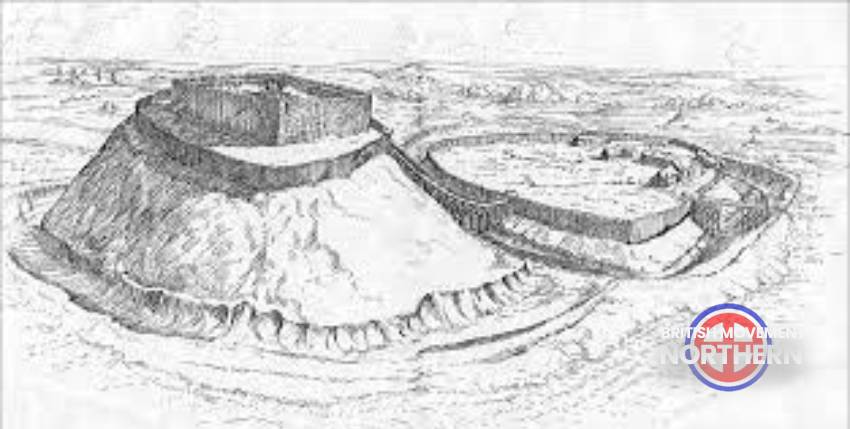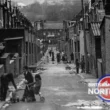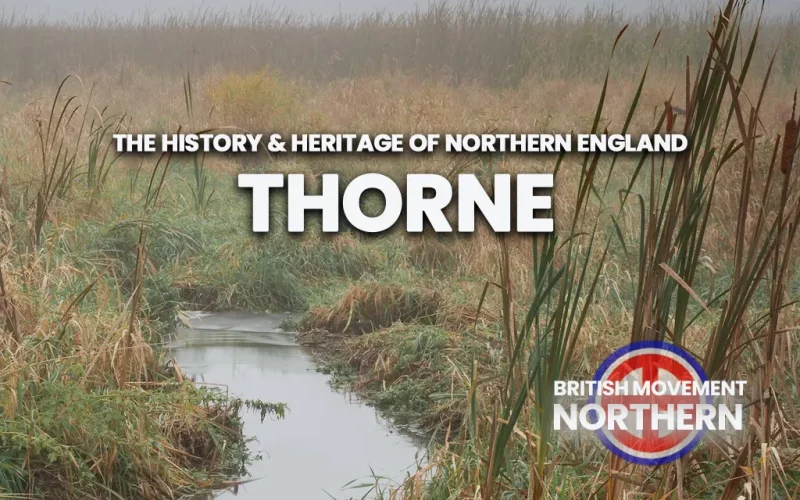‘Thorne’ or ‘Torne’ or ‘Torn’ or ‘Thourne’ or ‘Thurne’.
Once considered as being included as part of the Yorkshire Coalfield, within the old West Riding of Yorkshire until 1974, but these days considered to be part of South Yorkshire for political purposes. The market town of Thorne grew up within the boundaries of the old church parish of Thorne and Moorends.
Originally known by its Anglo-Saxon name which meant “a place where thorns grow” or according to some translations as “dweller by the thorn bush”, and as was the pattern of the medieval period it was subject to a variety of spellings up until the late 18th Century. According to local historians Thorne was still known by its dialect spelling ‘Thourne’ until the early 20th Century.
The area around the current town of Thorne was settled and occupied during the Neolithic, Bronze Age and Iron Age. The Celtic tribes of the Brigantes were dominant in the area before and during the Roman occupation of Britain.
The nearest Roman settlement was the Roman military fort of Danumcastra set to guard the crossing point of the River Don (later to become Doncaster), the Romans cleared some of the forest lands around the area of modern Thorne as part of their campaigns to bring local Brigantes under control.
The first permanent settlement of Thorne was made by the Anglo-Saxons in the 7th Century and was a pre-Christian community until the coming of the early church to the region. Yet in 632 the power of the church was challenged locally when the Christian king Edwin of Northumbria was defeated by heathen lords at the Battle of Hatfield, a few miles from the village of Thorne.
During the Viking period, Danish fleets travelled up the local rivers and made use of moorings in the village and surrounding marsh lands. Thorne was under the control of the Danelaw as part of the Kingdom of Northumbria and was ruled from York.
After the Norman Conquest in 1066, the settlement came under control of a Norman nobleman, William de Warren, the first lord of the manor of Thorne. The Domesday Book recorded the details of ‘Tourne’ in 1086 as being noted for 20 “fish-garths” which yielded catches of 20,000 eels per year from the surrounding rivers and marshes.
In the 12th Century, the Norman overlords of the de Warrene family built a timber motte and bailey castle at Thorne which was to be later built of stone to become Peel Hill Castle, an important local landmark for centuries to come.

In the mid-17th Century, a Dutch engineer Cornelius Vermuyden was brought to the region to undertake major land drainage developments to create usable farm land out of the vast regional marshlands and to make better use of local rivers and waterways.
The Industrial Revolution had limited impact on Thorne until the sinking of mine shafts at what became Thorne Colliery in 1909. Deep pit shafts were dug to reach the coal seams and recruitment of mine workers from across the country saw the village of Moorends expanded to house the incoming workforce. Unfortunately, Thorne Colliery suffered from major problems with incoming water and flooding, the pit never reached full production and was finally closed down in the early 1970’s.
Thorne remains classed as a market town and has no major industries. Thorne can certainly be classed as a White Town, the most recent population data shows that the population is 98.3 % White, mostly White British, the ethnic minority makeup of the town is miniscule.
The British Movement would love to receive articles for possible inclusion on this site from members and supporters across the North of England. Please remember that we have to operate within the laws of this country – we will not include any content that is against the current laws of the United Kingdom. News reports should be topical and be relevant to the regions covered by this website.












